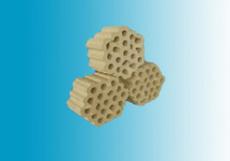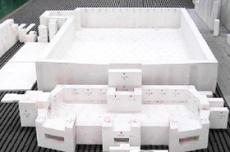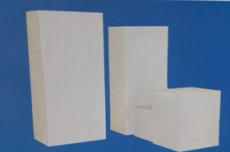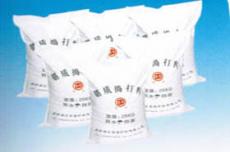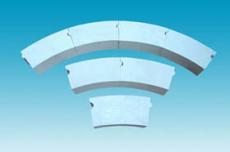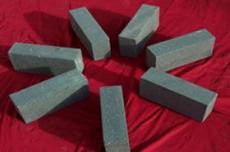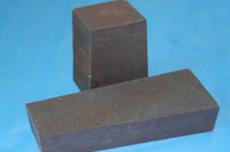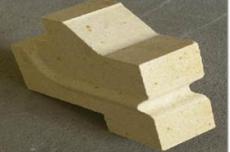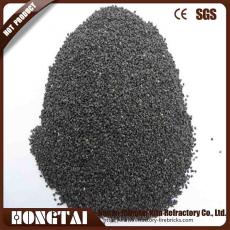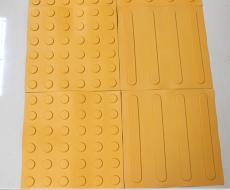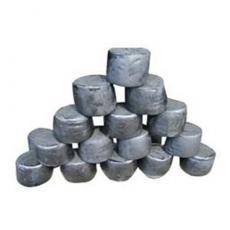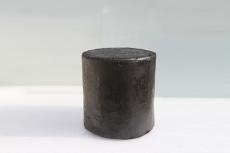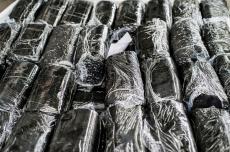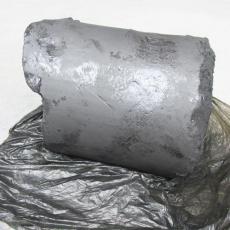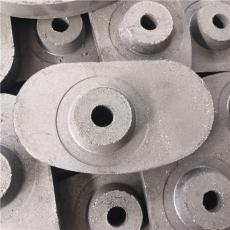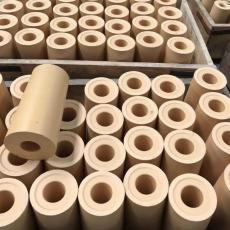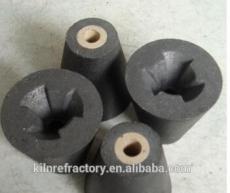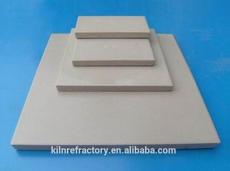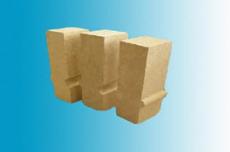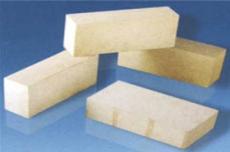
Industrial kilns need lining materials to protect their operation. In order to ensure that the lining materials can better serve various kiln equipment, a series of optimized configurations of refractory materials have been carried out to achieve the expected purpose of longevity of kiln linings.
01 Design of lining structure
Refractory materials are the basis of high-temperature application technology. The quality of lining materials plays a vital role in whether the entire project can be successfully put into production. Therefore, it is particularly important to design in combination with the performance of lining materials and related processes. In other words, both the process must be complete and the material configuration must be reasonable. During use, lining materials are inevitably subject to changes in ambient temperature, such as: temperature changes during oven drying, heating and operation, steam purging, and temperature rise and fall during start-up and shutdown. Smooth operation during use, avoiding damage to the lining caused by rapid cooling and heating, and improving the thermal shock stability of the material will help extend the service life of the lining. The lining is used in a high-temperature environment. It will expand thermally under high temperature conditions, and will be squeezed to produce thermal stress. When the internal stress of the lining exceeds its own strength, it will cause peeling and damage. In view of the particularity and harshness of the use conditions, higher requirements are placed on the performance of lining materials.
02 Optimization of refractory materials for lining structures
① Self-flowing castables: Self-flowing castables are an emerging high-tech material that combines excellent fluidity, compactness and stability, and are known as the fourth generation of castables. Relying solely on the deadweight of the material, it can be automatically flattened, degassed, and compacted to form a lining with uniform structural performance. It has the characteristics of being able to be formed without vibration or with a little external force to assist vibration, no noise pollution, low labor intensity, shortened working cycle, uniform lining structure and performance, and strong comparability between lining performance and test block performance. It can be used in sliding valves, cone sections and other parts where variable diameter construction is difficult.
② High wear-resistant lining materials for high-scouring parts: Phosphate-combined high wear-resistant lining material GP-2AM (AA material) overcomes the shortcomings of traditional two-component phosphate-combined high wear-resistant lining materials, and has the characteristics of short production and delivery cycle, easy use, excellent construction performance, low temperature sensitivity, no swelling, adjustable setting time, and excellent physical and mechanical properties.
③ Heat-resistant materials for thermal kilns: There is no medium scouring, the operating temperature is high, and the lining material is required to have good thermal insulation performance. At present, the commonly used ceramsite and expanded perlite have low refractoriness and cannot adapt to high temperature environments. We have developed a series of heat-resistant linings suitable for various temperature ranges of various thermal kilns by expanding refractory raw materials and using some high-grade synthetic raw materials. This type of product has the characteristics of small thermal conductivity, low linear change rate, and good construction performance.
④ Heat-insulating and wear-resistant lining for catalytic cracking unit: Catalytic cracking is an important secondary processing method for lightening heavy oil and is the core device of various refineries. It is a high-temperature and high-pressure device with many internal parts and complex shapes. There is high-speed scouring of fluidized catalysts, so amorphous refractory materials must be used as heat-insulating and wear-resistant linings in the metal wall.
⑤ Low-iron heat-insulating and wear-resistant lining: The carbon black deposited in the pores of the refractory material causes internal stress, and the damage is determined by the local concentration of carbon black. The concentration is affected by the distribution and strength of iron inclusions. The material can be constructed by adding appropriate liquid on site. It has few construction tools and can be shaped arbitrarily. It adopts a unique formula, which combines the properties that ordinary refractory materials cannot have, such as light weight, high temperature resistance, heat insulation, wear resistance, and low iron.
⑥ Environmental adaptability technology: Environmental adaptability technology refers to the fact that amorphous refractory materials can be normally constructed in low-temperature and high-temperature environments with harsh construction conditions by introducing composite admixtures. This material technology that can adapt to construction at various ambient temperatures is environmental adaptability technology. High temperature environment refers to a construction environment above 35°C. Generally, the binder aluminate cement is a fast-hardening material. High temperature environment will accelerate the process of cement hydration and generate a large amount of hydration heat. The generation of hydration heat promotes the growth of cement structural strength, causing the lining material to harden rapidly and lose construction performance; low temperature environment refers to a construction environment below 10°C. In a low temperature environment, the cement hydration reaction slows down, and even the material cannot harden due to the low temperature.
03 Lining construction and maintenance
With the development of lining material performance, material performance is more sensitive to factors such as water addition, stirring and dispersion, and maintenance, which puts higher requirements on construction technology. In addition, the maintenance and baking of the lining are very important for the lining to reach the best state. When the actual equipment is baked, all the equipment is connected in series. Since the distance between each equipment and the heat source is different, the heating speed is different. The various parts of the equipment and pipelines should be fully considered to extend the baking time so that the various parts of the lining can reach or approach the heat treatment requirements. From the point of view of use, the slower the heating, the longer the insulation and the more thoroughly the moisture is baked, the better. Conclusion In summary, through the optimization of the lining structure and lining materials, the purpose of improving the service life and assisting various thermal kilns to operate for a long time and stably can be better achieved. In order to ensure the high performance and stability of the lining materials, material manufacturers should pay attention to "raw materials are the source of quality risks, and stability is the first choice of raw materials", minimize uncontrollable factors in the production process, and realize automation, mechanization, and integrated control and management production; each process should have specific quality standards and process procedures, and ensure that the equipment is in a normal state; the testing equipment should be standardized and try to be consistent with the testing equipment of the national testing agency.
